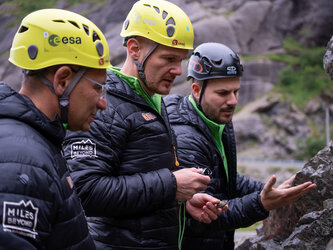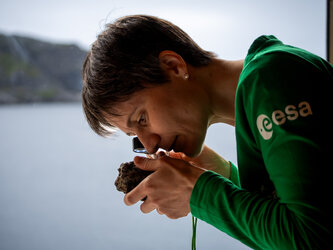
Pangaea 2021-2022
ESA’s Pangaea training course prepares astronauts and space engineers to identify planetary geological features for future missions to the Moon, Mars and asteroids.
The Pangaea campaign – named after the ancient supercontinent – provides the crew with introductory and practical knowledge to find interesting rock samples as well as to assess the most likely places to find traces of life on other planets. Leading European planetary geologists share their insights into the geology of the Solar System.
The theory part is followed by field trips to the Italian Dolomites, the Ries crater in Germany and to the volcanic landscapes of Lanzarote, Spain and some lunar-like fjords in Lofoten, Norway.
Course participants of the fourth edition in 2021 were ESA astronaut Andreas Mogensen, NASA astronaut Kathleen Rubins and EAC engineer Robin Eccleston.
Pangaea is the first step in preparing European astronauts to become planetary explorers on missions to other planets allowing them to communicate with science advisors on Earth effectively.
Through Pangaea, Europe is developing operational concepts for surface missions where astronauts and robots work together, among themselves and with scientists and engineers on Earth, using the best field geology and planetary observation techniques.






